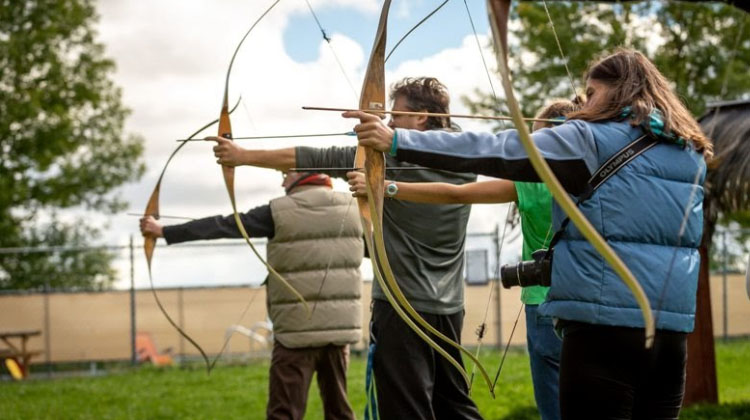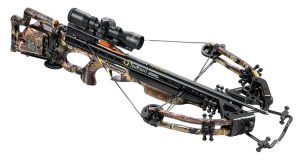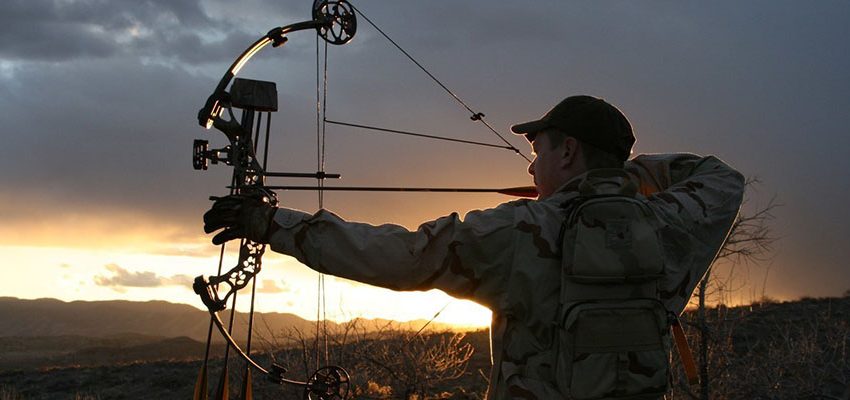Archery is the skill, practice, sport, or art of shooting arrows using a bow. It is one of the oldest activities on the planet that was used for combat and hunting during ancient times. Archery is one of the world’s earliest recreational activities that are still quite popular. In fact, the Royal Company of Archers is one of the world’s oldest sporting societies. Even though it is the oldest game on the planet, many people still don’t know the rules of archery or how to choose a bow.
Do you want to go hiking and shoot targets, or do you want to just relax in your backyard and have fun shooting arrows? Well, with the right bow, you can do all that. However, choosing the right bow can be quite challenging, especially with the different bows in the market. So, here are some factors to consider when selecting a bow.

Factors to Consider When Choosing a Bow
Which Type of Bow do you want?
In the history of archery and hunting, archers have used several bows that vary in form and shape. Currently, there are four main types of bows that have different benefits and specifications. The four main types of bows in the market are crossbows, compound bows, recurve bows, and the longbows.
Recurve Bows
Historically, recurve bows were quite popular with horsemen, and the modern version of this bow is used in the Olympics. The recurve gets its name from its unique shape. The tips of this bow are curved away from the archers while the central part is curved towards the archer. Recurve bows are quite common with beginners. Most trainers teach newbies using a barebow recurve, which has a riser, bow limbs, an arrow rest, and a string. Other components, such as the stabilizer, clickers, pressure buttons, and sights, are added as the student gains more skills. So if you want to learn more tips for selecting a recurve bow, please read on.
Longbows
Longbows were quite common during the medieval war. These bows were dominant in the battlefields until the mid-sixteenth century. They are slightly curved, long pieces of wood that are quite difficult to use and don’t have the same velocity as the other modern bows. Longbows require patience and more practice to master.
Crossbows
 Crossbows were popular in the battlefields during the Medieval and Greco-Roman ages. All modern crossbows resemble firearms, but they have a short bow that is attached to the muzzle. A crossbow has a short firing range and requires heavier drawing weight to function on the same level as the recurve and compound bows. The bow is usually drawn using a crank system before the string is pulled and attached to the crossbow’s triggering mechanism.
Crossbows were popular in the battlefields during the Medieval and Greco-Roman ages. All modern crossbows resemble firearms, but they have a short bow that is attached to the muzzle. A crossbow has a short firing range and requires heavier drawing weight to function on the same level as the recurve and compound bows. The bow is usually drawn using a crank system before the string is pulled and attached to the crossbow’s triggering mechanism.
Compound Bow
Compound bows have an innovative system of eccentric cams, pulleys, and cables that can help you hold the bow at a full-draw. The innovative system gives you time to aim without causing fatigue. Compared to the other bows, the compound bows are not affected that much by humidity and temperature changes. Due to their inherent complexity, compound bows are not the best bows for beginners.
Are You a Left or a Right Handed Archer?
The second factor to consider is if you are a left or right-handed archer. A left-handed archer holds his/her bow with the right hand and pulls the bow’s string using the left hand. A bows orientation is selected based on the hand that is pulling the string and not the one that is holding the bow. Therefore make sure you purchase the right bow based on your hand-orientation.
The Axle-To-Axle Length
The axle-to-axle length is the distance between the places where the two cams are attached to the bow. Bows with a bigger axle-to-axle length are easier to use. However, if you are hunting in the woods, you might not have enough space for a bigger bow.
The Draw Length
Draw length refers to the measurement of how far an archer can pull his/her bow’s string. It is the archery’s version of clothing size, which is measured in inches. So, make sure you select a bow that fits your draw length. With a proper draw length, your bow feels comfortable at full length, and you can shoot better. Longbows and recurve bows don’t have a set draw length. So, before you purchase a bow, make sure you know your draw length.
How to Measure Your Draw Length
- Stand with your arms stretched out and have someone measure the distance between your two middle fingers.
- Take the length between your two middle fingers and divide it by 2.5 to get your draw length.
The Draw Weight
Draw weights refer to the amount of force needed for you to pull the string. Draw weight is measured in pounds. The standard for establishing a bow’s draw weight is usually taken at a draw length of about 28 inches. The standard is usually indicated on the lower-limb of your bow as 35# @ 28’’. If your bow has a draw length of 28 inches, it means that if you pull it back to 28 inches, you are pulling 20 pounds.
Choosing Your First Bow
Selecting your first bow can be quite challenging, but with these factors, in mind, you will have the best bow in no time. However, before you settle on a certain type of bow, make sure you shop around and test different products. Remember, the right bow is quite easy to use, and it can increase your accuracy.
Since it is your first bow, make sure you purchase a bow that is not so hard to pull back. When starting, you will be using several muscles that you have never used before, and with time it will get easier to use. The type of bow (a hybrid cam, dual cam, and single cam bow) you purchase will depend on your shooting style. Dual cams are faster, while single cams tend to draw smoothly. The Hybrid cams are relatively new, and they offer a mixture of both.
Bio
Bob is the founder of bobsop.com. Bob is a talented archer who loves the outdoors. You will always find him hunting or doing some target practice in his backyard or in the woods with his friends or family members. He loves writing about the different new archery equipment in the market.

